 Flávia Linden
Flávia Linden Lisa Dengler
Lisa Dengler Anna Le
Anna Le Kellen Hofer
Kellen Hofer Hannnah P
Hannnah P
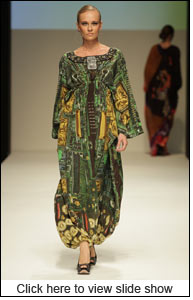 Known for his fascination with Arabia, designer Shrekahnth, in his third year at Dubai Fashion Week - DFW during 24th October, 2010 to 28th October, 2010 at atlantis, United Arab Emirates, presented a collection inspired wholly from Islamic art.
Known for his fascination with Arabia, designer Shrekahnth, in his third year at Dubai Fashion Week - DFW during 24th October, 2010 to 28th October, 2010 at atlantis, United Arab Emirates, presented a collection inspired wholly from Islamic art.
The “Arabian Nomad” collection experimented with digitally printed fabrics of pure silk, chiffon silk and satin silk. Robes in pale yellows, deep greens, pinks and blues flaunted flowing hemlines with square necklines. Busts carried motifs of flying eagles and digital fabric prints were enhanced so as to appear like wings on the back of the outfits.
With decorated war horses and other Islamic art elements emblazoned on the outfits, the designer was inspired by fabrics and textures dating more than 600 years, which were used for historical Islamic embroidery and artwork. In trying to replicate nomadic textures with digital art, the designer also experimented with the famous Russian Matryoshka dolls on the outfits, bringing about a strategic blend of Arab heritage with Russian culture.
The geometric patterns of the outfits replicated Islamic culture and art, while indulging in prints representing painted glass motifs as well as digital prints resembling cellular phone circuit boards.
The “Arabian Nomads” collection was followed by Megha Grover’s Spring/Summer collection - a set of pure white outfits. Futuristic silhouettes merged with classic cuts as the collection displayed a variety of white ensembles ranging from short tube dresses to long gowns and pantsuits ending in jodhpurs.
The crisp white collection of 15 outfits was embellished with crystals at the hemlines, sleeve ends as well as pant legs. A suit in white featured low cut pockets encrusted with the precious stones, as well as large necktie like pieces in full sparkle. With hints of Bohemian elements, the outfits of silk, satin and lace pointed to an elegant, yet laidback summer.
For most shoemakers in Dongguan city the impact of economic crises has been gone, rebounded footwear orders are not pleased thing for the owners of shoemakers because the shortage of labor remains for several months.
A job fair took place in Houjie plaza on October 24 that attracted few job seekers compared with more than 4000 jobs provided by enterprises. One of shoemaking owner said on the job fair we are here for employing a large numbers of worker, few of workers came to us for jobs.
The Dongguan Leather and Footwear Association said that labor shortage in Dongguan city can’t be ease in a short time, because of this reason many shoemakers have to cut the orders book and reduce production.
This is not the biggest problem for our shoemakers, fluctuation of RMB and raw material price hiking absorb our profits significantly, said Ms Zhou, in a foreign trade department of Liaoxia Footwear Sale Center, and adding that upper leather soared 30% in recent three months.
One of shoemaking owners said although we received enough orders, it seems our business quite good but our profit becomes less and less, if such situation continues going on we can’t stand such pressure.
BISS 2010 took place from October 14 to 16 in Busan city, the varieties of event held during the fair that includes the New Art of Shoe Technology Award, Shoe Designer Hill, the Smart IT Shoe & Parts Exhibition, the walking shoes Exhibition, a Joint Seminar of the AFBG (Asian Footwear Biomechanics Group) & KSSB (Korean Society of Sport Biomechanics).
This year, there are 130 companies and 500 buyers coming and visiting BISS. The visitors increased 10% in numbers compared to the previous year, according to organizers. The domestic small and medium sized enterprises, and walking shoes or smart IT shoes companies and international distributors, domestic department stores, shopping malls, and supermarkets were invited to present the trade fair.
In the current Korean shoe market, consumer demand for 'Special Function Shoes' and 'Outdoor Shoes' are increasing due to a rise in interest for health and leisure activities. This is why we see a number of walking shoes launched by brand companies around the world as well as in Korea.
International Footwear Biomechanics Symposium, which is composed of 400 global experts in 25 countries, hosted the first convention under the title of AFBG(Asia Footwear Biomechanics Group).
Fila launched shoes generating minute electric currents and Aison displayed calculating physical movement shoes. FIPC (Footwear Industrial Promotion Center) is working together KETI (Korea Electronics Technology Instute) and ETRI (Electronic & Telecommunications Research Instute) to develop tiny battery applied shoes, GPS shoes, and medical shoes for treatment and prevention.
The Hermes family controls almost 75% of the capital of Hermes International.
Following the recent unsolicited operations on the shares of the company, the family called a joint meeting of the management and the supervisory boards.
On this occasion, the family confirmed its unanimous determination to maintain their control of the company in the long-term.
The family and the management board reaffirm their commitment to serving the culture and the spirit of Hermes, unique in the world.
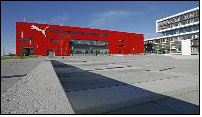 PUMA AG’s Management Board announces that irregularities, discovered at its Joint Venture ‘PUMA Hellas S.A.’ in Greece, will affect PUMA’s consolidated financial statements.
PUMA AG’s Management Board announces that irregularities, discovered at its Joint Venture ‘PUMA Hellas S.A.’ in Greece, will affect PUMA’s consolidated financial statements.
PUMA AG has initiated a comprehensive special audit by an independent auditing firm, appointed a new local management in Greece and put a halt to further irregularities. According to the preliminary findings of the audit, it is suspected that the Greek joint venture partner, along with members of the Greek local management, has committed a series of criminal acts.
As most of the irregularities have occurred prior to the fiscal year 2010, PUMA will have to restate its prior-year financial statements in line with IAS 8, i.e. adjust the 2009 comparative figures in the 2010 financial report. In total, the maximum extraordinary write-off effect should not exceed pre-tax 115 million Euros and does not affect the cash position. An estimated amount of up to 15 million Euros should affect fiscal year 2010 with the remainder applying to previous years.
Due to these irregularities and the general market situation in Greece, the company is further planning a restructuring in Greece that could lead to additional one-time charges of approximately 15 million Euros in the fourth quarter. As a consequence, it is likely that one-time charges of up to 30 million Euros will be booked in the fourth quarter of fiscal year 2010. A note to financial statements will be included in the third quarter results to be released on 26 October 2010.
PUMA AG’s Management and Supervisory Board have resolved to assert all claims according to civil and criminal law against the Greek Joint Venture minority partner and members of the local Greek management.
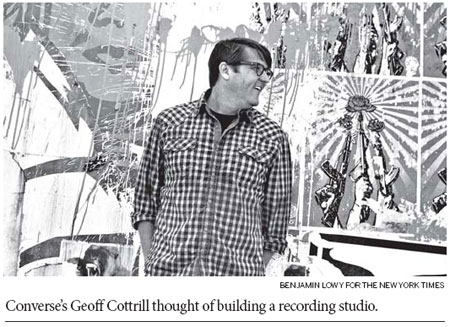
Lifestyle brands are becoming the new record labels.
In the latest twist in pop's relationship with corporate America, a studio rising in New York is being built by Converse, which will let artists record free.
A shoe company giving away studio time might seem peculiar. But with its new project, Converse ?whose sneakers have been worn by the Ramones and the Strokes ?wants to become a patron of the rock arts. The company is not alone: "Artists are finding the only way to achieve any financial safety is to become a lapdog of the great corporations," said the author and media critic Douglas Rushkoff, "just like the great painters did in the Renaissance."
Not long ago most youth-minded brands' pop strategies were limited to tour sponsorships and licensing songs for TV commercials. Now they offer money for video shoots, marketing, even distribution. Red Bull and Mountain Dew have record labels with credible rosters. Levi's, Converse, Dr. Martens, Scion, Nike and Bacardi have all sponsored artists, with promotional budgets fatter than most music labels could muster.
For the brands the desired payoff is coolness by association. And while a generation ago these arrangements would have carried a stigma for the artists, branding deals are now common. "Music is everywhere now, and if you have it tied to a brand, there's nothing wrong with that," said Bethany Cosentino of Best Coast, a new girl-group-meets-grunge band from Los Angeles.
When Converse asked Ms. Cosentino to collaborate on a song, she didn't hesitate. "If I said no it would have been stupid," she said.
Converse's studio, called Converse Rubber Tracks, is the brainchild of Geoff Cottrill, the firm's chief marketing officer. Converse says it will have no influence on the music, the artists will keep ownership rights and the songs aren't intended to be used in ads.
Mr. Cottrill said the company wants to "give back" to its loyal customers, but of course the enterprise is not purely altruistic. The idea is that helping new bands will generate sales and also give Converse an advantage over all the other companies out there competing for young consumers.
"Think of a cul-de-sac with four garages, and in those garages are four bands," Mr. Cottrill said. "On the street are all the big brands of the world ?Coke, Apple, the car companies ?standing there waiting for the garage door to open and the cool band to step out so they can tell them they're going to make them famous. But I would venture to say that inside those garages those kids are already wearing our shoes."
Lifestyle brands have been music curators for years; Starbucks even started a label after its success with albums like Ray Charles's "Genius Loves Company." And big companies like Apple and Nike have licensed music by rising but still low-profile artists, said Josh Rabinowitz, director of music at the Grey agency.
In the short term those services are much appreciated by bands. But what long-term effect the brands' power will have on musicians' careers ?or on the music itself ?remains to be seen.
Artists and talent managers say that the deals offered by brands can be fairer and more favorable than traditional label contracts.
But not every branding deal goes smoothly. Two years ago the Island Def Jam Music Group announced Tag Records, a joint label with Procter &Gamble's Tag Body Spray that promised a "multimillion-dollar marketing effort." A Brooklyn rapper, Q da Kid, was signed, but in less than a year the new label collapsed.
"I was with a company that didn't understand the music business," Q da Kid said. "They thought, ‘If we put enough money behind this, he'll be big.' And it wasn't like that."
Why Tag Records fell apart is not clear. But its fate points to the reality that sneaker and soda companies are ultimately in it to sell sneakers and soda, not music.
Mr. Cottrill suggested that the long-term success of Rubber Tracks would depend less on whether the bands that record there go on to fame and fortune than on the extent to which they keep Converse in their heart.
"Let's say over the next five years we put 1,000 artists through here, and one becomes the next Radiohead," he said. "But the 999 artists who don't make it, the ones who tend to get forgotten about, they'll never forget us."
But if young bands are developing with their attractiveness to corporate America in mind, will they, say, avoid political content?
Ms. Cosentino said that when she recorded the track "All Summer," Converse just said it was looking for a "summer vibe."
Models present creations by Mexican designer Gianfranco Reni at the Mercedez Benz Fashion show in Mexico City, October 25, 2010.
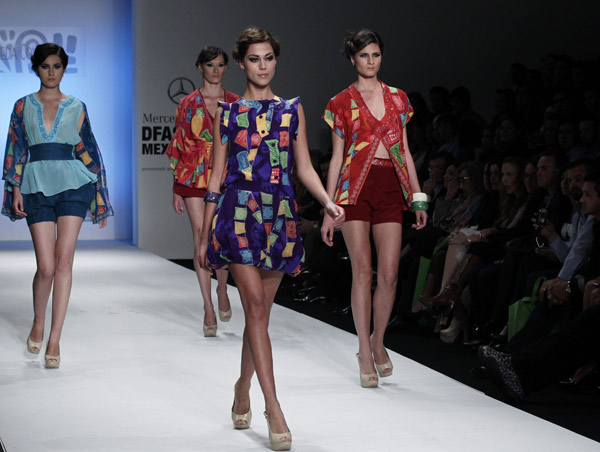
The Cabbeen show of 2011 S/S collection was launched in D.PARK on October, 25 during China International Fashion Week.
Cabbeen was created in 1997 which is one of most influential designer brands now in China. It is also the first Chinese designer brand to launch its show at New York Fashion Week.
Its 2011 S/S collection tells three kinds of entertainments namely “carnival life" , " travelling life" and " virtual life".
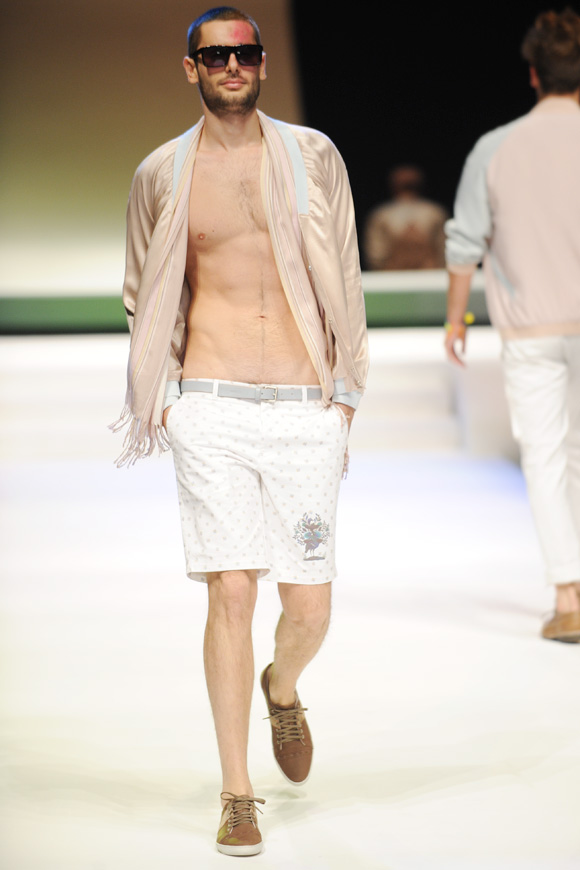
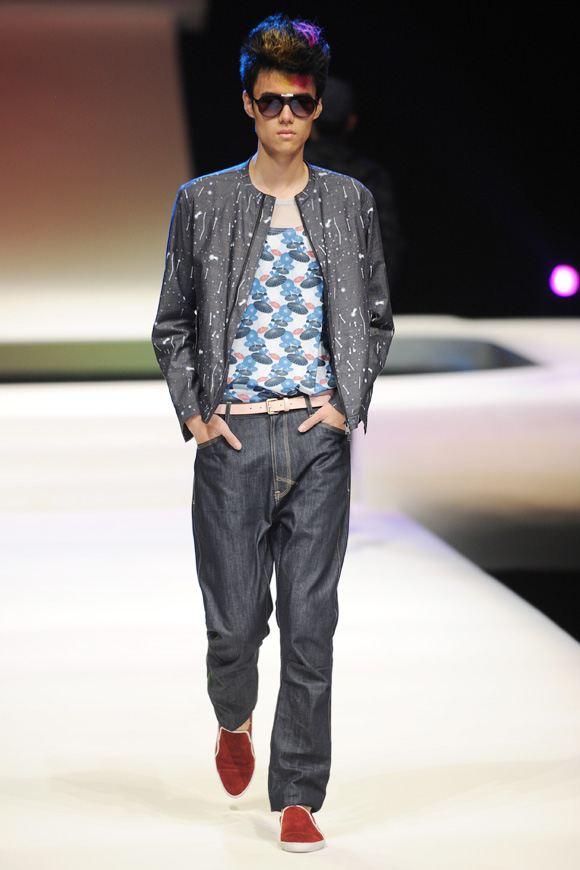
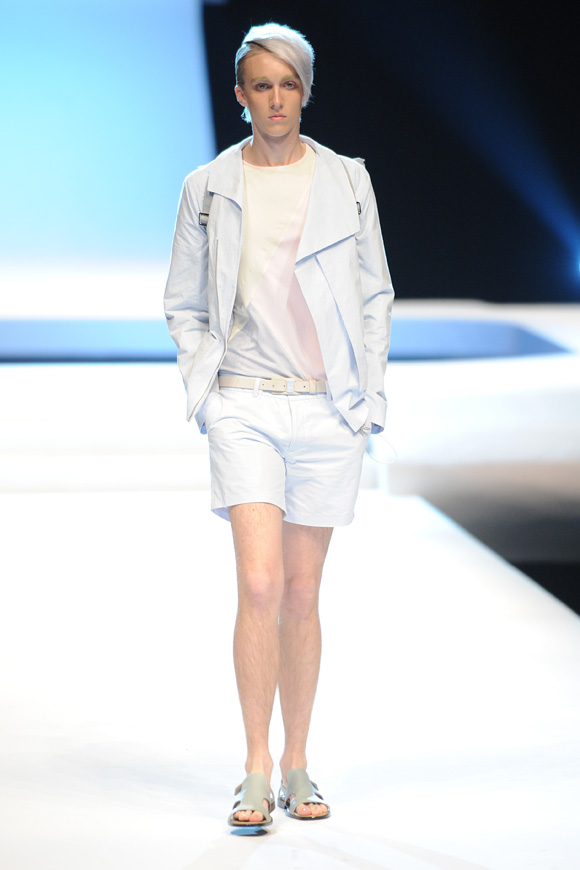
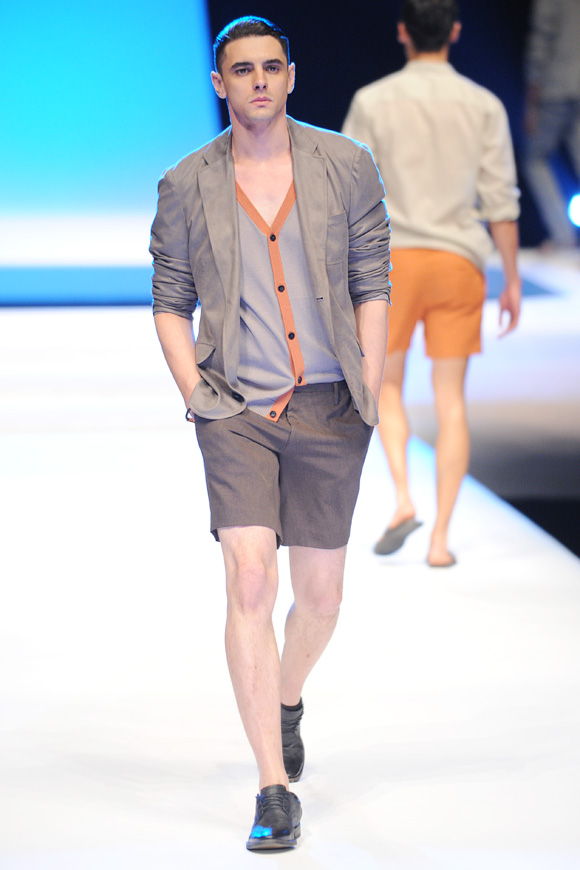
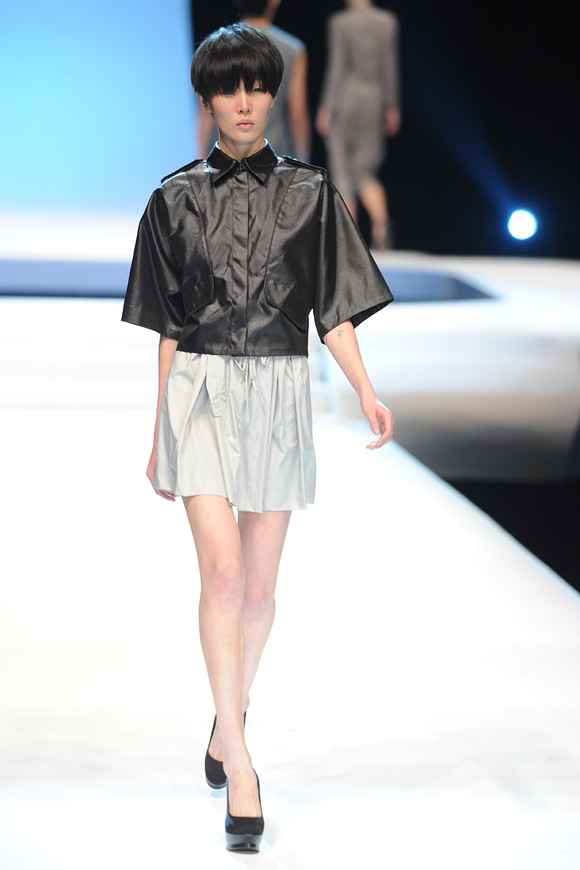
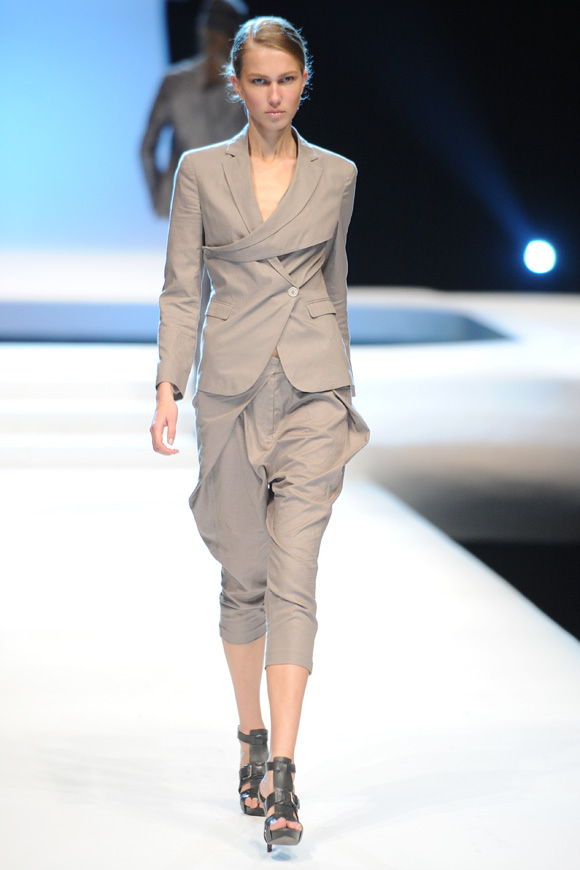
Next month Nigeria-based Hashan Industrial Park soon puts into use, and the Pengsheng Industrial Parks located in Uzbekistan will also be put into production, both are funded by private footwear enterprises in Wenzhou city. The operation of both industrial parks has marked the new beginning of overseas market expansion for footwear.
After one year’s construction the Hashan Industrial Park completes the first phase of project that includes four factory buildings, the total investment for the park is expected to reach US$80 million but the whole project will take four year to complete. Hashan will move their footwear production to the new park next month.
The other news said the first Chinese industrial park in Uzbekistan will complete the first phase of construction next month, US$30 million will be invested on the industrial park by five Wenzhou shoemaking companies, the first phase of projects is estimated to produce 600,000 pieces of cow leather, 300,000 pairs of leather shoes and 4 million square meters of porcelain tile.
According to Wenzhou Foreign Trade department, an industrial park in america funded by Chinese private enterprises has restored its construction that suspended during the financial crises, five companies in Shanghai and Guangdong province and three in Wenzhou city have registered to remove into the industrial park. Further more 10 enterprises plan to relocate production in the Vietnam-based Longjiang Industrial Park, which is built by Wenzhou enterprise.
The foreign trade department said these overseas industrial parks will play a vital role on Wenzhou economic growth and expansion of overseas market.
The government' interference in the free textile trade will affect the country' exports badly, Pakistan Yarn Merchant Association (PYMA) said Friday.
The export of the textile products and yarn will be affected if the Textile Ministry tries to disturb the free market mechanism, a senior member of PYMA, Khalid Rafi said.
He said yarn sector was already facing hardship in the form of higher regulatory duties and its export has come down to around 53 percent and is still a major foreign exchange earning segment of the textile sector, he added. He said the Textile Ministry should continue to maintain the textile policy and any sort of interference would damage the whole fibre of this sector.
He said, If the government wanted to support the downstream textile sector it should have given it from its own pocket and not at the cost of the spinning industry. He said, ??Only 25 percent of the yarn is exported while the remaining is always sufficient for the value-added apparel sector in the country.
He said there are around 415 spinning units in the country -out of which about 172 are working in Kotri, Hyderabad, Nooriabad Industrial Estate and Karachi. We are going to lose grip on the yarn exports and will face a huge loss of export orders besides unemployment in the spinning and yarn-manufacturing units in the country, he added.
He said all kinds of textile exports would also jump by Rs 400 million if the Textile Ministry keeps away from the affairs of value added sector.
The government should continue the textile policy as the local industry is moving along the international market, and in return the cotton growers will get Rs 200 billion more than they earned in the previous cotton year, cotton analyst Shakeel Ahmad said.
He said the spinning industry was not getting any sort of support from the government in the shape of subsidy or cheaper export refinance as the value-added textile sector has been enjoying over the years.
Ahmad said the value-added textile sector could compete in the export arena, which was already enjoying a number of facilities such as export refinance, LTFF and LTF-EOP, which was not available to the spinning industry.
The yarn sector believes in free trade and is not in favour of any sort of restriction on exports of yarn and imposition of the regulatory duty, it will hamper the export, Ahmad maintained. He said in open market economy, there should not be any ban on export or import except for the ban on import of luxury items. The spinning industry is operating and also competing in the export market even though about 25 percent of the shortage of raw cotton is met through imports. Total requirement of spinning industry is about 15.5 million bales (170 kg) per annum whereas average production of cotton in the country is 12 to 12.5 million bales.
The negative attitude of the ministry would badly hurt the spinning sector, which is in its revival stage after three years of massive shocks due to shortage of raw material, high cost of doing business and international recession.